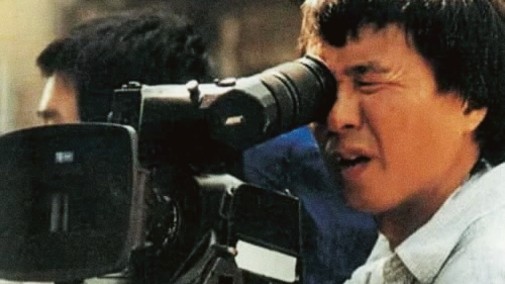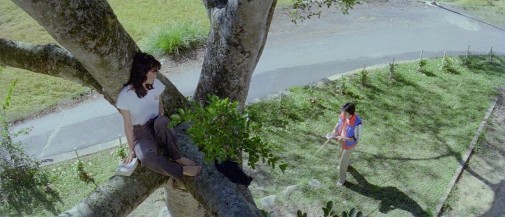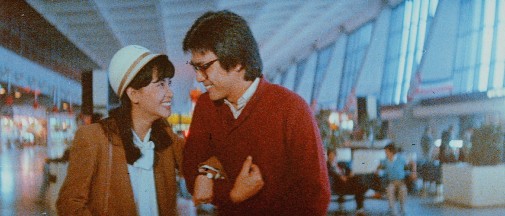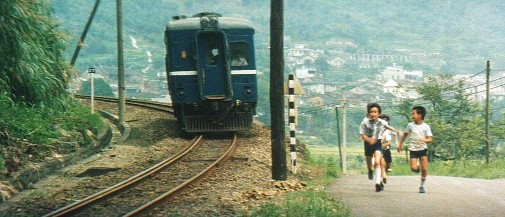
His films are poems, lyrical examinations of the mundane that live in the moment but look backward to a past out of reach but still tangible. Master shots are his preference, whether standing still through mnemonic patterns or roving in idyll movement. Form and emotion are synonyms in this cinematic imagination, indissociable ideas that repudiate traditional storytelling norms. Indeed, many of his works are constructed from the transitory passages other filmmakers leave on the cutting room floor.
For these reasons and more, I have long loved the cinema of Hou Hsiao-Hsien. So, to celebrate his 75th birthday, I ask you, dear reader, to join me on a trip down memory lane, a multi-part odyssey through this master of cinema's filmography…
 CUTE GIRL (1980)
CUTE GIRL (1980)
Though nowadays, he's regarded as one of the foremost proponents of the slow cinema movement, Hou Hsiao-Hsien's directorial career started far away from such ponderous realms. From 1980 to 1987, he directed a feature per year, making it easy to delineate a gradual evolution. With each film, one feels a master coming into his own, an auteur's vision consolidating over consecutive experiments. It all started with Cute Girl, also known as Lovable You, a peppy romantic comedy that dances to the sound of Taiwanese disco.
Watching the sweet flick, it's difficult to imagine its director would grow up to be a man of quiet poetry and long uninterrupted takes. Indeed, I'd wager Cute Girl's energetic 90 minutes include more cuts than the director's entire 90s output. His sophomore effort, Cheerful Wind or Play While You Play, followed the same model, even reusing the first feature's leading lady – pop star Fei Fei Feng. It wouldn't be the last time the director found a muse in the realm of Taiwanese music. What's more, this second feature marked the first of many appearances of a pool table on the director's oeuvre.
 CHEERFUL WIND (1981)In 1982, The Green Green Grass of Home marked a point of substantial evolution for Hou Hsiao-Hsien's cinema. Though it was a studio-produced romcom like Cute Girl and Cheerful Wind, this pastoral diversion divided its attention in remarkable ways. Instead of focusing solely on an insipid love story, the camera often drifts away to bask in the silliness of mischievous kids, their improvised nonsense, and effervescent energy.
CHEERFUL WIND (1981)In 1982, The Green Green Grass of Home marked a point of substantial evolution for Hou Hsiao-Hsien's cinema. Though it was a studio-produced romcom like Cute Girl and Cheerful Wind, this pastoral diversion divided its attention in remarkable ways. Instead of focusing solely on an insipid love story, the camera often drifts away to bask in the silliness of mischievous kids, their improvised nonsense, and effervescent energy.
The so-called Three Musketeers – a trio of unruly boys – become the film's true stars, pulling Hou Hsiao-Hsien's cinema into a more realistic milieu of formless observation. In its interludes of domestic peace and scatological humor, The Green Green Grass of Home recalls Yasujiro Ozu's child-oriented comedies like I Was Burn But… and its remake Good Morning. This is a crucial detail since the cinema of Ozu would become a major influence on Hou Hsiao-Hsien later on.
 THE GREEN, GREEN GRASS OF HOME (1982)
THE GREEN, GREEN GRASS OF HOME (1982)
At this point, however, Italian Neorealists were a stronger reference, guiding the director towards an appreciation for the in-between moments of day-to-day life. Indeed, the shadow of Fellini looms large over the director's next film, a significant departure that would signify his artistic independence as part of the Taiwan New Cinema. However, that's a story for another day.